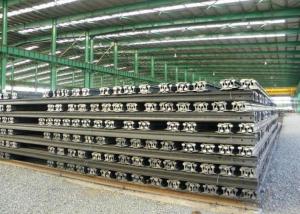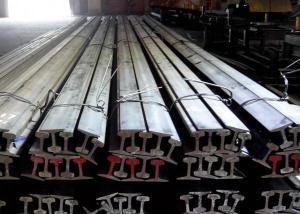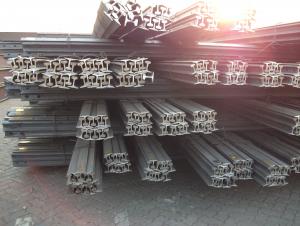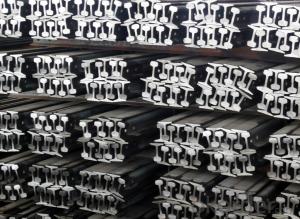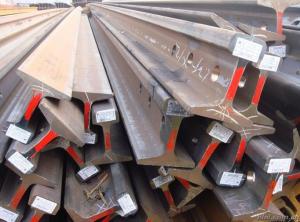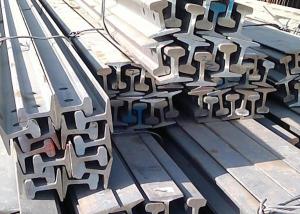Steel Heavy Rail with Multiple Specifications
- Loading Port:
- China main port
- Payment Terms:
- TT or LC
- Min Order Qty:
- 25 m.t.
- Supply Capability:
- 100000 m.t./month
OKorder Service Pledge
OKorder Financial Service
You Might Also Like
Product Description of Steel Heavy Rail with Multiple Specifications:
Alloy No | Grade | Element(%) | ||||
C
| Mn | S
| P
| Si
| ||
Q235 |
B
|
0.12—0.20 |
0.3—0.7 |
≤0.045 |
≤0.045
|
≤0.3
|
Invoicing on theoretical weight or actual weight as customer request
Payment terms: 30% advance payment by T/T, 70% payment against the copy of the B/L; 100% L/C at sight, etc.
Usages of Steel Heavy Rail with Multiple Specifications:
Light rail is mainly used in forest region, mines, factories and construction sites laid of the place such as temporary transport line and light motorcycles with line. Be widely used for railway, subway, transportation track, express, curve way, tunnel way and so on.
Packaging & Delivery of Steel Heavy Rail with Multiple Specifications:
1. Packing: it is nude packed in bundles by steel wire rod
2. Bundle weight: not more than 3.5MT for bulk vessel; less than 3 MT for container load
3. Marks:
Color marking: There will be color marking on both end of the bundle for the cargo delivered by bulk vessel. That makes it easily to distinguish at the destination port.
Tag mark: there will be tag mark tied up on the bundles. The information usually including supplier logo and name, product name, made in China, shipping marks and other information request by the customer.
If loading by container the marking is not needed, but we will prepare it as customer request.
4. Transportation: the goods are delivered by truck from mill to loading port, the maximum quantity can be loaded is around 40MTs by each truck. If the order quantity cannot reach the full truck loaded, the transportation cost per ton will be little higher than full load.
5. Delivered by container or bulk vessel
6. Delivery Time: All the Hot Rolled Steel Rail will be transpoted at the port of Tianjin, China within 30 days after receiving the advance payment by T/T or the orginal L/C at sight.
Inspection of Steel Heavy Rail with Multiple Specifications:
We will send the MTC of the factory to the clients dirrectly which contain the anlisis of the heat, chemiqul composition, phisical characteristicas, etc.
And our inspectors will arrive at the factory to meke the inspection of the size, length, weight and quantity before the transportation from the factory.
FAQ:
Q1: Why buy Materials & Equipment from OKorder.com?
A1: All products offered byOKorder.com are carefully selected from China's most reliable manufacturing enterprises. Through its ISO certifications, OKorder.com adheres to the highest standards and a commitment to supply chain safety and customer satisfaction.
Q2: How do we guarantee the quality of our products?
A2: We have established an advanced quality management system which conducts strict quality tests at every step, from raw materials to the final product. At the same time, we provide extensive follow-up service assurances as required.
Q3: How soon can we receive the product after purchase?
A3: Within three days of placing an order, we will begin production. The specific shipping date is dependent upon international and government factors, but is typically 7 to 10 workdays
Images:
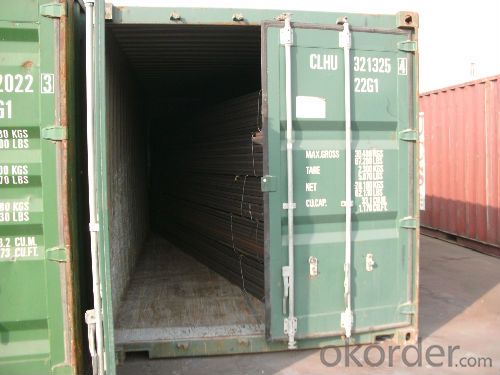
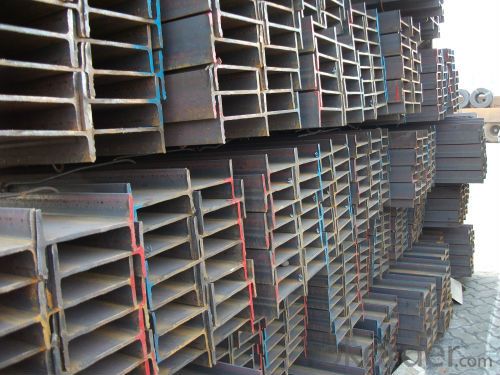
- Q:How do steel rails contribute to train stability during acceleration and deceleration?
- Steel rails contribute to train stability during acceleration and deceleration by providing a smooth and stable surface for the train wheels to roll on. The steel rails are securely fastened to the ground, making it easier for the train to maintain its course and prevent lateral movement. The high friction between the steel rails and train wheels also ensures that the train stays on track, even during sudden changes in speed. Overall, steel rails play a crucial role in maintaining the stability and safety of the train during acceleration and deceleration.
- Q:Are steel rails subject to warping or bending?
- Under certain conditions, steel rails can warp or bend. They are built to be strong and rigid to support trains and withstand their movement. However, factors like extreme temperature fluctuations, heavy loads, and improper installation or maintenance can cause warping or bending. Thermal expansion and contraction are a common cause of warping or bending in steel rails. When the temperature changes, the rails can expand or contract, leading to warping. For instance, in hot weather, the rails can expand and curve upwards, creating a kink in the track. Conversely, in cold weather, the contraction of the rails can cause them to bend downwards, resulting in a dip in the track. Heavy loads, such as those carried by freight or high-speed trains, can also cause steel rails to bend or deform. If the load exceeds the rail's weight-bearing capacity, it can lead to permanent deformation or rail failure. Improper installation or maintenance practices can contribute to warping or bending in steel rails as well. For example, if the rails are not properly aligned, they can experience excessive stress and deform over time. Similarly, neglecting regular maintenance, like addressing track defects or replacing worn-out rails, can result in warping or bending. Engineers and rail operators employ various measures to mitigate the risk of warping or bending. They carefully design rail systems to accommodate thermal expansion and contraction, using techniques such as expansion joints or continuous welded rail to allow for movement. Regular inspections and maintenance programs are implemented to identify and address any track defects or worn-out components that could cause deformation. Additionally, rail operators monitor and control train loads to ensure they stay within the specified limits for the rails. In conclusion, while steel rails are designed to be strong and rigid, they are susceptible to warping or bending under certain conditions. Extreme temperature changes, heavy loads, and improper installation or maintenance practices can contribute to this. However, with proper design, maintenance, and monitoring, the risk of warping or bending can be minimized, ensuring the safety and efficiency of rail transportation systems.
- Q:Can steel rails be used in areas with high vibration levels?
- Indeed, it is possible to utilize steel rails in areas characterized by elevated vibration levels. Steel, renowned for its strength and durability, commonly finds application in railway construction owing to its capacity to withstand substantial loads and intense vibrations. The design of steel rails incorporates mechanisms to absorb and disperse vibrations, thereby minimizing the impact on surrounding infrastructure and furnishing a secure and steadfast track for train travel. In addition, an assortment of techniques and engineering solutions can be employed to further lessen the effects of vibration in areas with heightened levels of resonance, including the utilization of resilient fastening systems or the implementation of vibration isolation measures. Consequently, steel rails prove suitable for deployment in regions with pronounced vibration levels, guaranteeing efficient and dependable railway transportation.
- Q:How do steel rails handle train braking forces?
- Steel rails are designed to withstand the immense braking forces generated by trains. The rails have high tensile strength and are securely fastened to the sleepers, which allows them to effectively handle the braking forces. Additionally, the rails are designed to distribute the load evenly across the track, minimizing any potential damage or deformation caused by the braking forces.
- Q:How are steel rails protected from mechanical damage?
- Steel rails are protected from mechanical damage through various methods such as regular maintenance, inspections, and the use of protective measures like rail fastening systems, rail lubrication, and impact-absorbing materials.
- Q:How do steel rails contribute to the efficiency of railway systems?
- Steel rails contribute to the efficiency of railway systems in several ways. Firstly, steel is an incredibly strong and durable material, which allows the rails to withstand heavy loads and constant wear and tear. This means that they can last for many years without needing frequent replacement or repair, reducing maintenance costs and downtime. Secondly, steel rails are designed to provide a smooth and stable surface for trains to travel on. The evenness of the rails helps to minimize vibrations and reduce friction between the wheels and the track, resulting in less energy being required to propel the train forward. This not only improves the overall energy efficiency of the railway system but also allows trains to achieve higher speeds, reducing travel times and increasing capacity. Furthermore, steel rails are engineered to have precise dimensions and alignment, ensuring that trains can travel along the tracks safely and smoothly. This accuracy helps to prevent derailments and maintain train stability, enhancing the overall safety and reliability of the railway system. Moreover, steel rails are designed to be compatible with various signaling and control systems, allowing for efficient and precise train operation. These systems rely on the accurate positioning of trains on the tracks, which is facilitated by the consistent and well-maintained steel rails. Lastly, steel rails offer excellent resistance to corrosion, which is particularly important in areas with harsh weather conditions or exposure to moisture. The longevity and resistance to corrosion of steel rails greatly reduce the need for frequent replacements, resulting in cost savings and improved efficiency for railway systems. Overall, steel rails play a crucial role in enhancing the efficiency of railway systems through their strength, durability, smoothness, precision, and resistance to corrosion. Their numerous benefits contribute to safer, faster, and more reliable train travel, ultimately improving the overall performance and effectiveness of railway systems.
- Q:Why can't the vertical rail bend the rail?
- The railway line to solve the rail expansion and contraction method is generally used for fastening the way, is the shrapnel into spring fastener fastener (also called spring bar fastener), rail tightly in the sleepers, forcibly will produce thermal expansion and contraction of the energy to digest, but the existence of such a problem is generated when the thermal expansion and contraction energy is greater than the distance unit of sleeper rail adhesion, makes up the phenomenon of rail, rail sleeper unit length twist.
- Q:What is the process of grinding steel rails?
- The process of grinding steel rails involves several steps to ensure the smoothness, accuracy, and safety of the rail tracks. Firstly, the rail surface is inspected for any defects or irregularities, such as cracks, wear, or corrugations. This is done using specialized equipment, such as ultrasonic testing, to detect any flaws that may affect the integrity of the rail. Once the inspection is complete, the next step is to remove any imperfections from the rail surface. This is typically done using a grinding machine, which consists of large rotating grinding stones or wheels. These grinding stones are mounted on a grinding carriage, which is then moved along the length of the rail. During the grinding process, the grinding stones rotate and apply pressure to the rail surface, removing the defects and smoothing out any irregularities. The grinding machine is operated by skilled technicians who carefully control the speed, pressure, and depth of the grinding to ensure precise and consistent results. After the initial grinding, the rail surface is checked again to ensure that all defects have been removed and the surface is smooth and even. Any remaining imperfections are addressed by making additional passes with the grinding machine until the desired standard is achieved. Finally, the rail surface is inspected once more to verify that it meets the required specifications. This includes checking for proper alignment, smoothness, and gauge accuracy. The grinding process is considered complete when the rail surface meets the necessary standards for safety and operational efficiency. Overall, the process of grinding steel rails is crucial for maintaining the integrity and performance of rail tracks. It helps to remove defects, improve surface quality, and ensure the smooth and safe operation of trains.
- Q:Can steel rails be recycled at the end of their lifespan?
- Yes, steel rails can be recycled at the end of their lifespan. Steel is a highly recyclable material, and the recycling process involves melting down the old rails to create new steel products. Not only does recycling steel rails help conserve natural resources, but it also reduces the amount of waste sent to landfills and saves energy compared to producing steel from raw materials.
- Q:What are the different grades of steel used in rail production?
- There are several different grades of steel used in rail production, each with its own specific characteristics and purposes. The most commonly used grade is known as carbon steel, which is a versatile and cost-effective option. It provides sufficient strength and durability for most railway applications. Another grade frequently used is low-alloy steel, which contains additional elements such as manganese, silicon, and nickel. This grade offers improved strength, toughness, and resistance to wear and tear. It is often used in areas where the rails are subject to heavy loads and high stress. In certain cases, high-strength low-alloy (HSLA) steel is utilized. This grade combines the benefits of low-alloy steel with even greater strength and toughness. HSLA steel is employed in situations where the rails need to withstand extreme conditions or heavy loads, such as in high-speed rail systems or freight transportation. Additionally, some specialized railway applications require stainless steel. This grade is highly resistant to corrosion and is commonly used in coastal areas or environments with high humidity. Stainless steel rails are also used in certain specialized industries, such as chemical transportation or food processing. Overall, the choice of steel grade for rail production depends on factors such as the intended use, load requirements, environmental conditions, and budget considerations. Manufacturers carefully select the appropriate grade to ensure the railways provide the necessary strength, durability, and longevity for safe and efficient transportation.
1. Manufacturer Overview |
|
|---|---|
| Location | |
| Year Established | |
| Annual Output Value | |
| Main Markets | |
| Company Certifications | |
2. Manufacturer Certificates |
|
|---|---|
| a) Certification Name | |
| Range | |
| Reference | |
| Validity Period | |
3. Manufacturer Capability |
|
|---|---|
| a)Trade Capacity | |
| Nearest Port | |
| Export Percentage | |
| No.of Employees in Trade Department | |
| Language Spoken: | |
| b)Factory Information | |
| Factory Size: | |
| No. of Production Lines | |
| Contract Manufacturing | |
| Product Price Range | |
Send your message to us
Steel Heavy Rail with Multiple Specifications
- Loading Port:
- China main port
- Payment Terms:
- TT or LC
- Min Order Qty:
- 25 m.t.
- Supply Capability:
- 100000 m.t./month
OKorder Service Pledge
OKorder Financial Service
Similar products
New products
Hot products
Hot Searches
Related keywords




